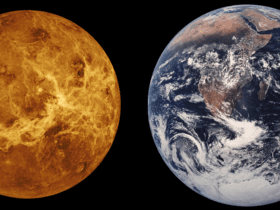How conducive is the Moon to the survival of humans? It seems that our odds have just improved. A recent study has shown that there are regions on the moon where temperatures are consistent enough for human beings to exist. On the moon, there are craters and tunnels where the temperature is around 17 degrees Celsius (63 degrees Fahrenheit), making it conceivable for humans to live there. During the day, the temperature on the surface of the Moon may reach as high as 126 degrees Celsius (260 degrees Fahrenheit). It may go as cold as 137 degrees Celsius (280 degrees Fahrenheit) below zero at night.
New findings
Now, experts from the University of California, Los Angeles think that such areas of temperature stability might transform the direction of lunar exploration and open up options of long-term human residence on the moon. The researchers think that the sections of these pits that are in the shade might shield people from potentially dangerous components such as solar radiation, cosmic rays, and microscopic meteorites. On the moon, one night or day is comparable to around two weeks on Earth, and people have a tough time surviving in conditions that are so extreme in both heat and cold. Currently, study and human living on the moon are challenging endeavors.
According to Tyler Horvath, who was in charge of the research project, around 16 of the 200 identified pits originate from collapsed lava tubes. Lava tubes are tunnels that are formed from cooled lava or crust, therefore Horvath’s assessment is accurate.
The scientists speculate that awnings within these lunar pits, which were found for the first time in 2009, might be the cause of the consistent temperatures. David Paige, a professor at UCLA, and Paul Hayne, an associate professor at the University of Colorado Boulder, are also members of the study team. In order to evaluate how the moon’s surface and craters’ temperatures changed over time, the researchers analyzed photos obtained from NASA’s Diviner Lunar Radiometer Experiment.













Leave a Reply